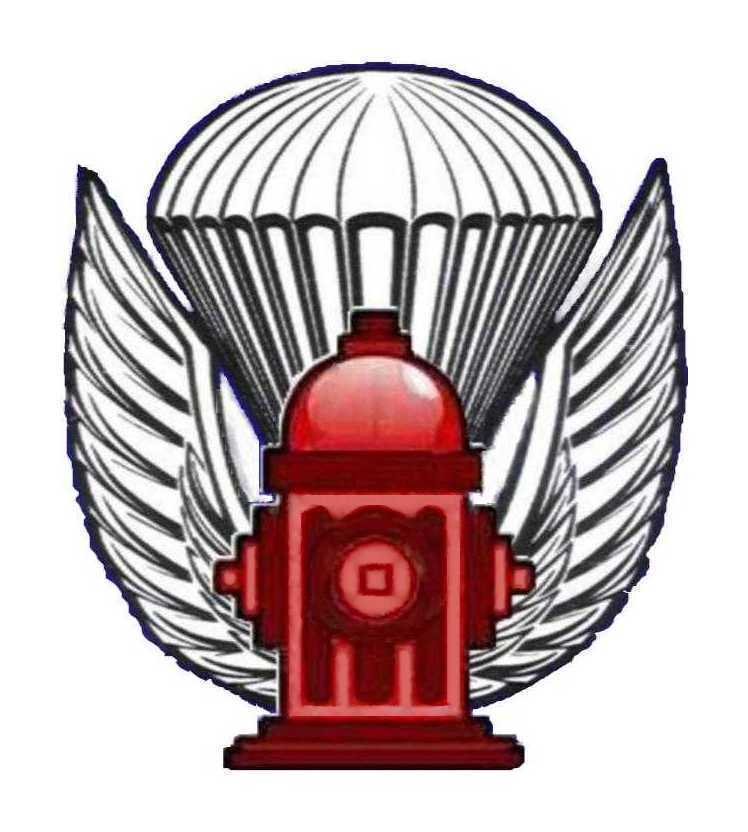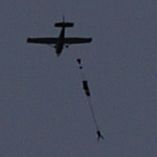\QuoteSo my new Mirage G4 just came in the mail today, and now I have to get everything assembled. I have my reserve, main, and AAD. I'm curious how many of you guys out there assemble your own rigs and how difficult is the actual process?
I only have 38 jumps under my belt, but I'm a quick learner and usually prefer to build and assemble things on my own. I plan on getting a rigger to assemble and pack the reserve, I'm just interested in doing my own main canopy assembly from the risers and D bag, to the pilot chute. Are there any special tools I may need? Or just simply follow the instructions from the container and canopy manufacturers?
Thanks for any help.
Have a rigger assemble your gear while walking you through each step, so that you may learn the process and be able to do it next time. Afterwords, thank and tip him for the service.
You could probably assemble your gear just fine by yourself, but you will learn more tricks/techniques/information from the rigger than you will by figuring it out from a manual.
Keith Medlock
wmw999 2,146
Yes, you can put it together, but no, you shouldn't just go jump it after that. And yeah, messing with the AAD should be left to the rigger -- but please read the manual. And all the other manuals.
And then pay the rigger extra to talk to you extensively when he assembles it, so that you can learn even more about it. Learning about your gear with demystify it -- that's always a good thing. Note: "paying the rigger extra" probably just means bringing a 6-pack along to share when the inspecting and assembling are done -- ask the rigger how they want to do it, and if they don't want you there at all, I suggest that's not the right rigger for this time.
Wendy P.
wolfriverjoe 1,351
QuoteThat's exactly how you'll learn about your gear. Inspect it well first; learn how the lines are attached, take a look at the stitching, etc.
Yes, you can put it together, but no, you shouldn't just go jump it after that. And yeah, messing with the AAD should be left to the rigger -- but please read the manual. And all the other manuals.
And then pay the rigger extra to talk to you extensively when he assembles it, so that you can learn even more about it. Learning about your gear with demystify it -- that's always a good thing. Note: "paying the rigger extra" probably just means bringing a 6-pack along to share when the inspecting and assembling are done -- ask the rigger how they want to do it, and if they don't want you there at all, I suggest that's not the right riggerfor this timefor you at all.
Wendy P.
FIFY
"~ya don't GET old by being weak & stupid!" - Airtwardo
wmw999 2,146
Back in the olden days, Jimmy Godwin had a sign in his loft:
Reserve repacks $10
If you watch $15
If you help $25 ![]()
Wendy P.
wolfriverjoe 1,351
QuoteBack in the olden days, Jimmy Godwin had a sign in his loft:
Reserve repacks $10
If you watch $15
If you help $25
Wendy P.
Yeah, I see that in a lot of car shops too.
But I am willing to put a little extra time and effort into showing someone what's what and how stuff works and fits together.
I would much rather have that than the typical "Here's my rig, can you have it done tomorrow?" then they turn and walk away.
One of the reasons I got my ticket (and the main thing I took from the course) is to better understand how the gear works.
I know not everyone agrees, but that's OK too.
"~ya don't GET old by being weak & stupid!" - Airtwardo
Slurp56 0
QuotePlease explain why “riggers” on this forum are telling the OP this is just fine for him to setup his own gear?
It's kind of like teaching students to pack, without ever having them touch a canopy.
Let them give it a go. When they get stuck or are unsure, they will ask. Most importantly, have someone with experience look it over when you're done to verify the work is correct.
But I suppose there is no hard and fast rule to determine in which situations it's appropriate, so we just tell them "Have your rigger do it." From personal experience, I've learned more from doing it myself, than watching my rigger and the only cutaways I've had were intentional.
P.S. Yes, I realize it's unpossible for me to have an understanding of my gear, or how to assemble it, because I am not a rigger.
I have proof-read this post 500 times, but I guarantee you'll still manage to find a flaw.
wmw999 2,146
Wendy P.
skybytch 259
QuotePlease explain why “riggers” on this forum are telling the OP this is just fine for him to setup his own gear?
I don't think any rigger has suggested that he assemble and pack the entire rig himself and go jump it. There really isn't a whole lot that he can screw up so badly in attaching either a main or a reserve to a container that a rigger couldn't easily find and fix.
Yes, it might take a rigger a bit longer to fix a mistake, and it can be a pain in the ass to have an eager newbie watching the assembly and pack job (which, btw, the OP should do). But eager newbies showing interest in rigging should be encouraged; they are the riggers of the future. And hey, if he does it right he's saved the rigger some time and effort - I doubt the FAA really cares who put the lines on the links as long as the rigger certifies that they were put on correctly.
At a minimum, by attempting to do it himself before taking it to a rigger he's going to end up knowing more about his gear than most people with 50 jumps do. imho, that's a good thing. As a rigger, wouldn't you rather have informed and knowledgeable customers instead of ones who think there's some
kind of magic going on inside their containers?
QuoteAlso, a Senior Rigger is not authorized to supervise repairs.
Not sure what repairs might be needed to assemble a brand new main and reserve; could you elaborate?
JohnRich 4
QuoteAt a minimum, by attempting to do it himself before taking it to a rigger he's going to end up knowing more about his gear than most people with 50 jumps do. imho, that's a good thing.
That is true. And it's okay, as long as he has a rigger inspect his work.
But here's an example. Let's say he's installing his lines to his risers on steel rapide links, and in his innocent zeal he over-tightens the barrel nuts, cracking the barrels or stripping the threads. Will a rigger catch that? Hopefully. But those can be hard to detect. If not, it could cause a riser link failure on deployment, and a disastrous malfunction.
So, I think it would be better if he watched a rigger do the work, even assisted the rigger, so that the rigger can explain to him about the proper torque to apply to those rapide link barrel nuts, thereby preventing the problem from ever happening in the first place, and possibly not being detected. Doing it in the presence of the rigger is more safe than doing it alone, and then having a rigger inspect it later.
I once caught an amateur rigger pulling a rapid link through one of those pieces of plastic tubing used as a slider stop. My technique is to put a pull-up cord through the link, thread the ends through the tubing, then wrap the end of the pull-up cord around one fist to pull it through the tubing which is held in the other hand. Do you know what this amateur was using to pull it through? Metal cutting snips. Yep. It was the closest thing to pliers that he had at the time, so that's what he used. He actually made big gouges in the end of the steel link... If I hadn't happened to walk by and witness that, it would have been installed on someone's rig, and who knows what failure could have then occurred.
Getting advice from riggers when you're new is always a good idea.
I'm tempted to say: "There's no such thing as routine maintenance", when it comes to parachute gear. But maybe that's not 100% true...
Dutton 0
Good for you. I got my riggers certificate my second year in the sport because I wanted to learn about my gear.
Ask your rigger to supervise you and put it together yourself. I'm sure he'd be glad to help given the right encouragement...
At least you're not going to be one of those douchebags who have a license but can't actually pack their main. ![]()
hackish 8
QuotePlease explain why “riggers” on this forum are telling the OP this is just fine for him to setup his own gear?
As a rigger we must certify it as being airworthy. I think most responsible riggers will verify everything when a rig arrives without their seal on it. The advice stands and will be only as good as the rigger asked to certify it - as a further precaution the advice was to notify the rigger of the assembly procedure was given.
Since the OP is reading all the instructions and following the directions I think it's reasonable to expect they'll probably get the main assembly part correct but the advice above was to also have a rigger check it anyway. If in the USA a normal jumper isn't allowed to hook up their main alone then having a rigger go over it will still shift the responsibility.
If someone asks me to check their stuff over then it's going to be done as well as if I hooked it up myself.
-Michael
jbred74 0
But no one answered the question about there being any special tools I may need to assemble the main canopy parts...
JohnRich 4
QuoteBut no one answered the question about there being any special tools I may need to assemble the main canopy parts...
It depends upon the kind of parts. You might need a small wrench, a needle and waxed tack cord, a pull-up cord, loctite, nail polish, silicone lubricant... You haven't given us enough info to know what you might need.
jbred74 0
Use instructions from all the manuals you got.
If you don't understand some of the instructions, ask a rigger...
Then once you are finished assembling it all, take it to your rigger and say "hey, i put this together myself... Please inspect and pack as you normally would... I'm happy to pay for assembly if I did something wrong and you have to re-do it..."
Then tell all the people on here to go to hell for telling you to not do it yourself... There's nothing wrong with trying it yourself... Even if the FAA says you can't...
And if your rigger won't do that or isn't cool with it, bring it to me. I'll do it for you.
Ni4ky b
FAA Senior Rigger
CSPA Rigger A
To all those telling this guy not to do it himself:
Give your heads a shake... If he does it then takes it to a rigger, he's fine. If the rigger fails to find a mistake that this non-rigger made while assembling it himself, he (or she) is a shitty rigger... End of story.
hackish 8
QuoteI've got a PD Sabre2 with soft links, Smart reserve with soft links, and Mirage G4 container with D bag and collapsible pilot chute. And like I said before, I have no interest in assembling and packing the reserve and plan on leaving that totally up to my rigger. So this question is for attaching and assembling the main canopy parts.
Read through the manuals. They list the procedure and with that you will know if you need any tools. Personally I use a piece of rigger's thread to pull the slink through the main canopy lines but you can use many different things for that. Pullup tool, piece of string etc.
For attaching the d-bag some rigs use a mallion rapide and some don't need anything at all. On my Javelin i used a slink. Refer to your owner's manual 'cause I don't know the G4 off the top of my head.
-Michael
DARK 0
QuoteAccording to what I’ve been taught and what I am reading, you are going against the rules by assembling your components yourself.
105-2c Sport Parachute Jumping / Section 11
“Assembly of major parachute components”
“A. The assembly or mating of approved parachute components from different manufacturers may be made by a certificated appropriately rated parachute rigger or parachute loft in accordance with the parachute manufacturer's instructions and without further authorization by the manufacturer or the FAA.”
Correct me if I’m wrong, but isn’t this why Riggers exist in this sport? Isn’t this why I spent a lot of money to get certified? Not to say you are not capable of doing the work, but in my understanding, you are not supposed too…
Also, a Senior Rigger is not authorized to supervise repairs. Only a Master Rigger can perform this function in the learning process.
Please explain why “riggers” on this forum are telling the OP this is just fine for him to setup his own gear?
as far as i was aware a licenced skydiver can do whatever the hell they want to their main parachute and still be legal to jump out of a plane as long as their reserve and container has been packed and inspected by a rigger, by the looks of that paragraph though i was wrong
i have done assembly work for mains for myself and a few friends but they always always end up being inspected by a rigger as i am not one yet, or even that close really.
having said that there are people out there with no ticket who i would trust more then some riggers iv met
op why dont you speak to your rigger tell them how interested you are and im pretty sure they will let you observe and participate in the entire assembly process from container to reserve to main and if they dont, find a new rigger who will









I have less time than that in the sport, but I am like a sponge. I want to learn and be good at my new found craft. Both jumping and rigging. But if someone at my home DZ said they wanted to assemble their new rig, I would tell them not to.
Like you said, "What could go wrong?"
I like that answer.
I would be against anyone assembling their own gear without proper training. If someone brought me a rig they had put together on their own and asked if I'd check it, I'd probably take it completly apart and start from step one. Not as a punishment or to be a dick, but because I have a set procedure for assembly to make sure it is done right.
I would, however, be more than happy to assemble it with them watching, explaining as I go. It would probably take longer, but I wouldn't charge any extra. I'd be fine taking the extra time to help someone who is actually interested in how the gear goes together and how stuff works.
"~ya don't GET old by being weak & stupid!" - Airtwardo